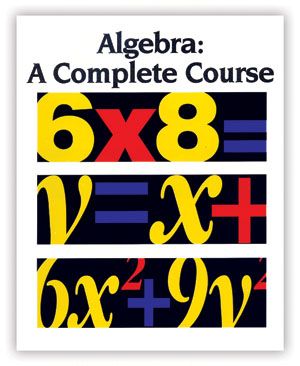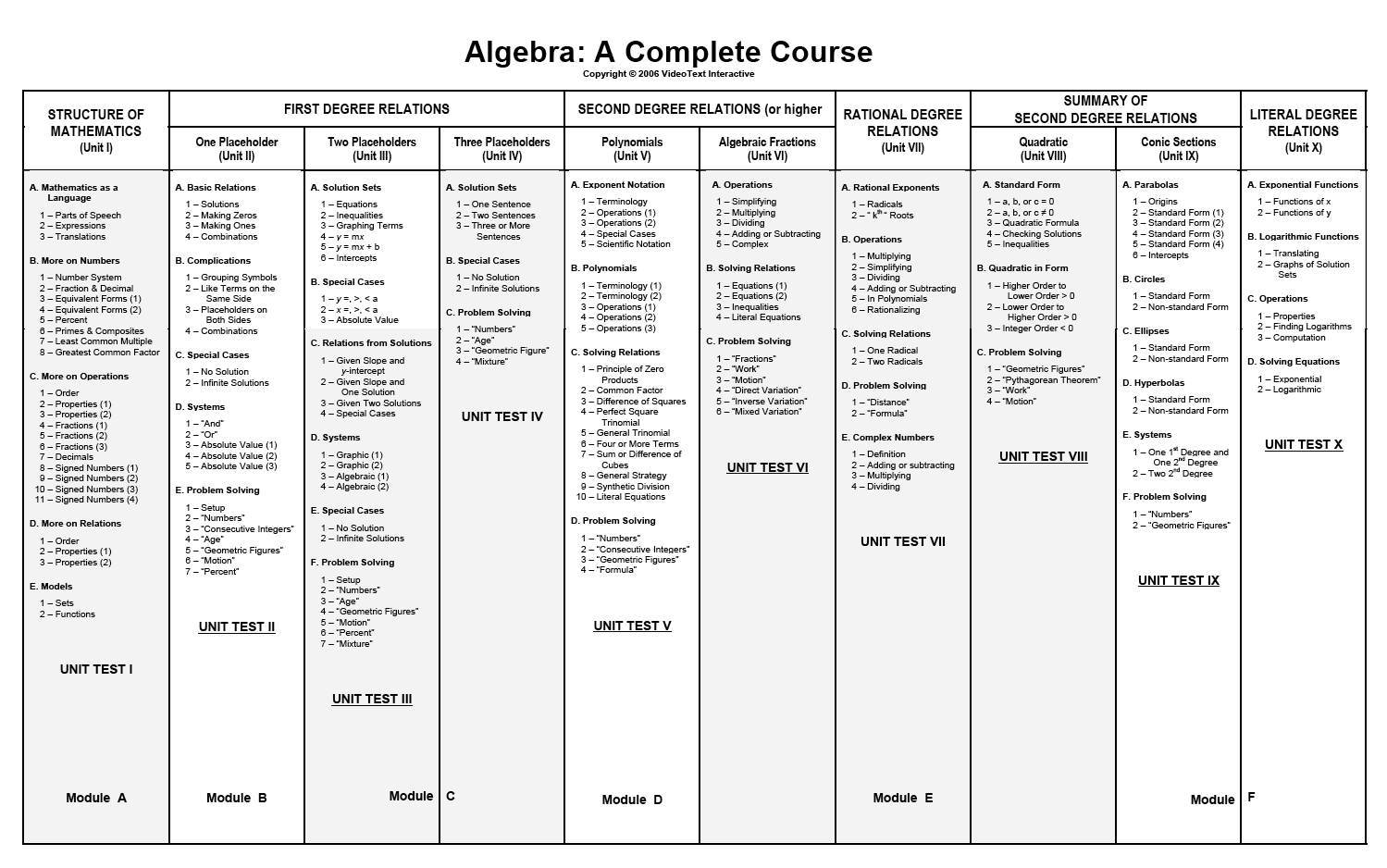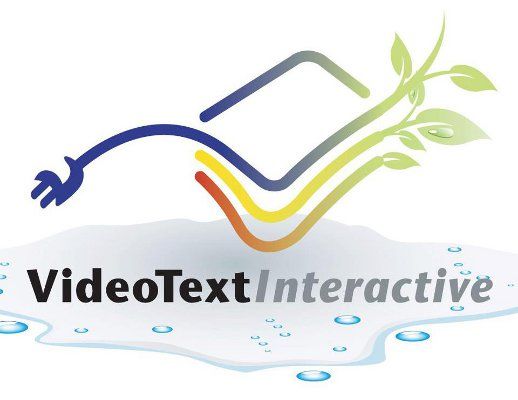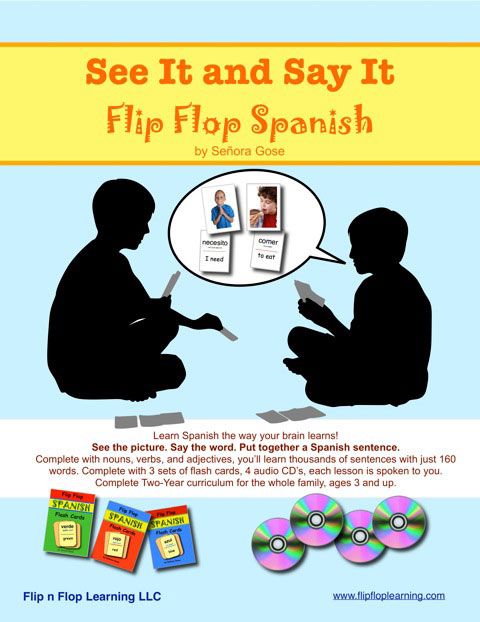Monday, September 30, 2013
Saturday, September 28, 2013
Review: VideoText Interactive
Algebra: A Complete Course is an interactive math course from VideoText Interactive. What makes it interactive? Instead of the student having a traditional textbook, which may or may not have separate teaching DVDs, the teaching in this course is done through teaching videos with written notes as a backup. I was given a 3 year subscription ($299) to the complete course for review. This subscription includes access to all of the modules for two children.
I used this program with Ezekiel. I chose to print the worktexts and course notes for him, though this isn't necessary and you could have your student work directly from the computer screen. We were both impressed with this program. It really focuses on a mathematical understanding, not basic memorization. I didn't receive a great math education in high school, and it was mediocre in middle school. I learned some whys that have eluded me for decades by watching these videos--there is a reason why we flip fractions and multiply in order to divide fractions! Ezekiel enjoyed it as well. When asked his opinion on the program, he said "I think the videos explain things well. I liked that he showed relationships between math and language. The first lessons were really easy and it only took about 20 minutes, but then it started taking about 45 minutes. Overall, I look forward to continuing with it."
Still not sure? Check out this sample lesson and supporting material.

This course does not have a traditional scope and sequence. As the title Algebra: A Complete Course might suggest, it covers PreAlgebra, Algebra 1, and Algebra 2. The layout of each unit is meant to be a logical introduction to algebraic concepts. Because of the scope and sequence, it is highly recommended that any student begin at the beginning.
It is generally recommended that you start this course in 8th or 9th grade, but if your child is younger and doing well in math you can consider starting it earlier. You can start this course with your child when they:
- can add, subtract, multiply, & divide whole numbers, fractions, and decimals
- know how to convert fractions to decimals and decimals to fractions
- know how percents relate to decimals and fractions
- know a little bit about positive and negative numbers
Once subscribed, both student and instructor have an account. The instructor account includes links to PDFs for all the course notes, worktexts, quizzes, tests, solutions, and instructor's guides. The student account includes links for course notes, worktexts, and solutions for the worktext problems. Both include links to the lesson videos.
 |
| Instructor Account |
 |
| Student Account |
There are specific steps for using this program, which includes 176 video lessons. The first thing your student needs to complete for each new lesson is a quiz over the material learned in the previous lesson. Once they take the quiz, you check the answers. If there are any missed problems, your student needs to figure out where they went wrong and then they can receive partial credit. Following the quiz, your student will watch the new lesson. You are encouraged to watch the lesson with your child and pause the video when questions are posed and allow your child to answer. After they watch the lesson, then they should teach the lesson back to you using the course notes. Once this is completed and the lesson is understood, then the student works problems in the worktext. The instructor checks the answers, and if any problems are missed the student needs to figure out the reason why. There are plans for completing the program in 1, 2, or 3 years, but all follow the same basic framework.
I used this program with Ezekiel. I chose to print the worktexts and course notes for him, though this isn't necessary and you could have your student work directly from the computer screen. We were both impressed with this program. It really focuses on a mathematical understanding, not basic memorization. I didn't receive a great math education in high school, and it was mediocre in middle school. I learned some whys that have eluded me for decades by watching these videos--there is a reason why we flip fractions and multiply in order to divide fractions! Ezekiel enjoyed it as well. When asked his opinion on the program, he said "I think the videos explain things well. I liked that he showed relationships between math and language. The first lessons were really easy and it only took about 20 minutes, but then it started taking about 45 minutes. Overall, I look forward to continuing with it."
Still not sure? Check out this sample lesson and supporting material.
For more reviews of VideoText Interactive, visit the Schoolhouse Review Crew.

Thursday, September 26, 2013
Review: Flip Flop Spanish
Flip Flop Learning has developed a Spanish program that can be used with children as young as 3, yet is also great for the adult learner. This program is See It and Say It Flip Flop Spanish, and I was recently sent a copy to review. This two-year program is priced at $99.95.

See It and Say It Flip Flop Spanish comes packaged in a nice little box. Included in the box are:
- 3 sets of flash cards
- 2 card holder pages for a 3 ring binder
- 4 audio CDs and a sleeve for a 3 ring binder
- lesson plans (3 hole punched)
- white board paddle & marker
- cover inserts and spine insert for a 3 ring binder
The first thing I noticed when I opened the box were the 3 Easy Steps to Get Started. These explain how to set up the binder, and the next step is to open up to lesson 1 and play the CD. It doesn't get much easier than that!
There are 45 lessons, and each lesson is designed to take one week (and there is a break week about every 6 weeks). It's recommended that you work on Spanish 3 times a week. Lessons take about 15 minutes. At the end of the course, you'll have learned 160 Spanish words that will allow you to make your own sentences in Spanish.
There are 45 lessons, and each lesson is designed to take one week (and there is a break week about every 6 weeks). It's recommended that you work on Spanish 3 times a week. Lessons take about 15 minutes. At the end of the course, you'll have learned 160 Spanish words that will allow you to make your own sentences in Spanish.
The bulk of the teaching is done through the flash cards and the CD. The flash cards have a photograph on one side, and on the reverse side is the Spanish word (with pronunciation) and English word. The CD walks you through the pronunciation and has you practice speaking. You're instructed to like up the cards (picture side up) and then repeat the Spanish word while touching the correct card. Next, you'll move along to creating sentences. As an extra step, older students are encouraged to flip the cards over and write the Spanish sentence. As you progress in the program, you are instructed to make additional flashcards for words like "and" and "is", allowing you to make more complex sentences.
Throughout the lesson manual are Grammar Notes for Parents. These explain various Spanish grammar concepts quickly and simply. There are also Grammar pages that go a little more in depth on the grammar concepts (they may be skipped if needed). There are also crossword puzzles and word searches to review vocabulary. There are fun activities, like watching a movie in Spanish or seeing who can make the longest sentence.
See It and Say It is a very engaging program. It's so simple to use, but it's also very effective in teaching vocabulary and how the language works. Even my 37 year old brain was able to retain the vocabulary! I also love that it can be used with a wide range of ages. We enjoy learning together, and it's great to have a program that will work with our range of ages (7-14). But the best part? It's just plain fun! It has kind of a game feel to it so you want to pull it out and work on it.
Throughout the lesson manual are Grammar Notes for Parents. These explain various Spanish grammar concepts quickly and simply. There are also Grammar pages that go a little more in depth on the grammar concepts (they may be skipped if needed). There are also crossword puzzles and word searches to review vocabulary. There are fun activities, like watching a movie in Spanish or seeing who can make the longest sentence.
See It and Say It is a very engaging program. It's so simple to use, but it's also very effective in teaching vocabulary and how the language works. Even my 37 year old brain was able to retain the vocabulary! I also love that it can be used with a wide range of ages. We enjoy learning together, and it's great to have a program that will work with our range of ages (7-14). But the best part? It's just plain fun! It has kind of a game feel to it so you want to pull it out and work on it.
For more reviews of See It and Say It Flip Flop Spanish, visit the Schoolhouse Review Crew.

Monday, September 16, 2013
Slow Start
 Goodness, we're getting a slow start this year. To begin, I didn't have everything planned when we started in August (or was it July?), so we were winging it. Then it seemed like we had a lot of dentist appointments and ortho consults. I don't know about y'all, but a simple appointment can throw off the whole day. Then there was Very Nice Weather and kids who wanted to play with the boys in the cul-de-sac. Then we had family visit. Then there was a birthday. Now this week is a scheduled week off that can't be changed.
Goodness, we're getting a slow start this year. To begin, I didn't have everything planned when we started in August (or was it July?), so we were winging it. Then it seemed like we had a lot of dentist appointments and ortho consults. I don't know about y'all, but a simple appointment can throw off the whole day. Then there was Very Nice Weather and kids who wanted to play with the boys in the cul-de-sac. Then we had family visit. Then there was a birthday. Now this week is a scheduled week off that can't be changed.Oy!
I'm trying not to panic. I'll spend this week getting fully prepared. Because of all our false starts, I've got an idea of how NOT to schedule things, so that's a good thing. I also know better how to plan the courses I was confused about before (Wheelock's Latin and American Literature for Luke & Ezekiel, to name a couple).
I'm reminding myself that this isn't the first time a slow start has happened or things haven't gone according to plan (in fact, the miracle would be if the opposite happened!). I'm still learning to be more flexible and less of a perfectionist. It's a constant fight for me to not let the perfect get in the way of the good.
It's a great time to lean into God and remember that he's my source of strength. He already knows how our year is going to go, after all, so I've got nothing to worry about!
Saturday, September 14, 2013
Review: PeopleKeys Student Binder
PeopleKeys is a company that produces material to help people unlock their potential. We were recently asked to review their StudentKeys Student Binder, which contains 6 different assessments that reveal different traits about your student. It is recommended for ages 13+.
The 6 workbooks included in the binder are:
- The Personality Style Workbook: This workbook uses the DISC system of personality style analysis. "D" measures how a person solves problems, "I" measures how a person attempts to influence others, "S" measures how a person responds to change, and "C" measures how a person responds to rules. After the student takes the test, the workbook provides information on each personality style, including detailed overviews and how they approach tasks.
- The Perceptual Learning Style Workbook: This workbook helps the student figure out their learning style: auditory, visual, or kinesthetic. By knowing the way you learn best, you can use your strengths to learn more easily. For each style there are tips to enhance learning during lectures, when studying, and while taking tests. The workbook ends with a questionnaire that helps the student design a productive learning environment.
- The Cognitive Thinking Style Workbook: This workbook uses the acronym LITE to describe thinking skills. "L" represents literal thinkers, "I" represents intuitive thinkers, "T" represents theoretical thinkers, and "E" represents experiential thinkers. Knowing how information is processed allows students to maximize their study time. In addition to explaining the different types of thinking styles, there are suggestions on how to improve learning for each type.
- The Values Style Workbook: This workbook helps students to understand their value system and why they might respond to situations certain ways. The four value styles described in this workbook are Loyalty, Equality, Personal Freedom, and Justice. A portion of the workbook is dedicated to understand and communicating with people who hold a different value system than you do.
- The Career Choice Workbook: This workbook refers back to the student's personality style. There are lists of different career choices for each personality type.
- The Goal Setting Workbook: This workbook is a fill in the blank workbook. It guides the student through setting goals, including career goals, educational goals, leisure goals, and personal goals, and helps them prioritize the goals they've set forth, as well as help them decide on a realistic timeline.
I had Ezekiel (13) in mind for this review. He's had an interest in these types of tests, and to receive 6 in one binder was a great treat. I liked that the assessments didn't take very long; they ranged from 7 to 15 minutes each, yet they provided interesting insights into his personality. The Personality, Learning Style and Thinking Style workbooks revealed or reinforced things that we knew or suspected. While there were no big surprises, I still thought they were worthwhile to have confirmation and further understanding of these three areas. The Career Choice workbook is very interesting. We've discussed possible careers with Ezekiel, and this is a fairly extensive listing that will spur further thought and conversation over the years. The most interesting part of the Values Style workbook was the suggestion on how to interact with those who have a different value style than you do. The Goal Setting Workbook wasn't very useful for Ezekiel at all. While it is good to know how to set goals, I think this workbook would be more useful as he approaches the end of high school.
The StudentKeys Student Binder can be purchased for $49, or you can purchase each individual assessment for $13 each. The information is interesting and can lead to a better understanding of your student. When you understand your student better, and when your student understands how they function better, learning can be maximized. For this reason, I'd recommend you check out the offerings from PeopleKeys.
For more reviews of PeopleKeys, visit the Schoolhouse Review Crew.

Thursday, September 12, 2013
Review: Logic of English Essentials
Logic of English has developed programs to help students learn to read, write, and spell. I was sent their Essentials program to review. This program is for students who are 8 years old, but there are suggestions for using it with younger children.
I received:
- Hardcover Teacher's Manual ($95)
- Cursive Workbook ($25)
- Phonogram & Spelling Game book ($25)
- Basic Phonogram Flash Cards ($18)
- Spelling Rule Flash Cards ($15)
- 2 Phonogram Game Card sets (1 in cursive/1 in manuscript) ($10 each)
Logic of English
Essentials is an all in one Language Arts program. While using Essentials, your student will learn 74 phonograms, along with 30 spelling rules.
Grammar, vocabulary, & dictation are also included.
The heart of the Essentials program is the Teacher's Manual. I received the hardcover, and it's a nice, sturdy book that will stand up to lots of wear. There are 40 lessons (every 5th lesson is an Assessment & Review), and each lesson is broken down into three parts. Part One deals with phonograms, sounds, and spelling rules. Part Two focuses on spelling dictation and analysis. Part Three focuses on grammar, dictation, composition, and vocabulary. Lessons are written for the teacher, and what is supposed to be accomplished in each lesson is very clear. You can view a sample lesson here.
How long each lesson takes really depends on the age and ability of your student. There are sample schedules in the beginning of the Teacher's Manual that deal with all different types of students. This program can be used with struggling readers and spellers (about 75-130 minutes/day) and struggling spellers (about 35-65 minutes/day), and you can complete the program in 8-16 weeks with these students (ages 8 through adult). If you'd like to use it with younger students, you can plan on spending 30-60 minutes/day (for 6 & 7 year olds) and complete the program in about 40 weeks, or spend 5-60 minutes/day with your 5 or 6 year old and complete the program in 80 weeks. The suggestion for ESL student is to spend 30-120 minutes/day, and in this instance the time to complete this program can really vary--anywhere from 8 to 80 weeks.
How long each lesson takes really depends on the age and ability of your student. There are sample schedules in the beginning of the Teacher's Manual that deal with all different types of students. This program can be used with struggling readers and spellers (about 75-130 minutes/day) and struggling spellers (about 35-65 minutes/day), and you can complete the program in 8-16 weeks with these students (ages 8 through adult). If you'd like to use it with younger students, you can plan on spending 30-60 minutes/day (for 6 & 7 year olds) and complete the program in about 40 weeks, or spend 5-60 minutes/day with your 5 or 6 year old and complete the program in 80 weeks. The suggestion for ESL student is to spend 30-120 minutes/day, and in this instance the time to complete this program can really vary--anywhere from 8 to 80 weeks.
The Cursive Workbook (this is also available in manuscript) contains all of the needed worksheets for every lesson. It's also available as a PDF, which is a great option if you're teaching more than one child. It's nice and uncluttered, and it's labelled clearly so it is very easy to find the page for the portion of the lesson you are working on. You can view a sample here.
The Basic Phonogram and Spelling Rule flashcards are nice and sturdy. They make it easy to review and quiz your child on what they're learning. The Spelling Rules are clearly labelled with the spelling rule number, and the rule is written clearly on the front with examples of the rule applied on the back. The Basic Phonogram cards have the phonogram on the front with examples on the back.
The Basic Phonogram and Spelling Rule flashcards are nice and sturdy. They make it easy to review and quiz your child on what they're learning. The Spelling Rules are clearly labelled with the spelling rule number, and the rule is written clearly on the front with examples of the rule applied on the back. The Basic Phonogram cards have the phonogram on the front with examples on the back.
The Phonogram & Spelling Game Book is full of games and drills for learning and practicing phonograms and spelling words. The Phonogram Game Cards are made of the same sturdy material as the flashcards, and 1-3 packs are needed for the 9 games in Chapter 1 of the book. There are 9 chapters total; the first 5 focus on phonograms and the last 4 are focused on spelling words. There is a wide variety of games--everything from Go Fish and Bingo to Phonogram Hop and Spelling Basketball. There are ideas and suggestions if you have a tactile learner as well.
I used this with all of the boys (ages 14, 12, 11, 9, & 7). Since they all can read very well, I was using Essentials mainly for spelling remediation. I used this one room schoolhouse style, and we did lessons together as a group. We reviewed the phonograms together by reciting them in unison. My boys found this to be the most tedious part of the lesson, and they often tried to recite them by using opera voices. We learned the spelling rules together as well. All written practice was done in cursive, so it was great practice and review (all of the boys learned/re-learned cursive a few months ago). The grammar practice also worked well in a group setting. I had the boys raise their hands when I asked questions since much of this was review for the older boys. This allowed the younger boys to have time to remember what they were learning, and I called on them any time they raised their hands. The boys weren't huge fans of the games, but it's not because there is anything wrong with the games. They've never been huge fans of games during school time--they'd rather just get through the lessons so they can get on with the day. The biggest downside to doing this together as a group was that it added time onto the lessons (the boys are easily distracted by each other and there are lots of tangents), so it took us 3-4 days to get through 1 lesson.
For more reviews of Logic of English, visit the Schoolhouse Review Crew.

Subscribe to:
Comments (Atom)



















